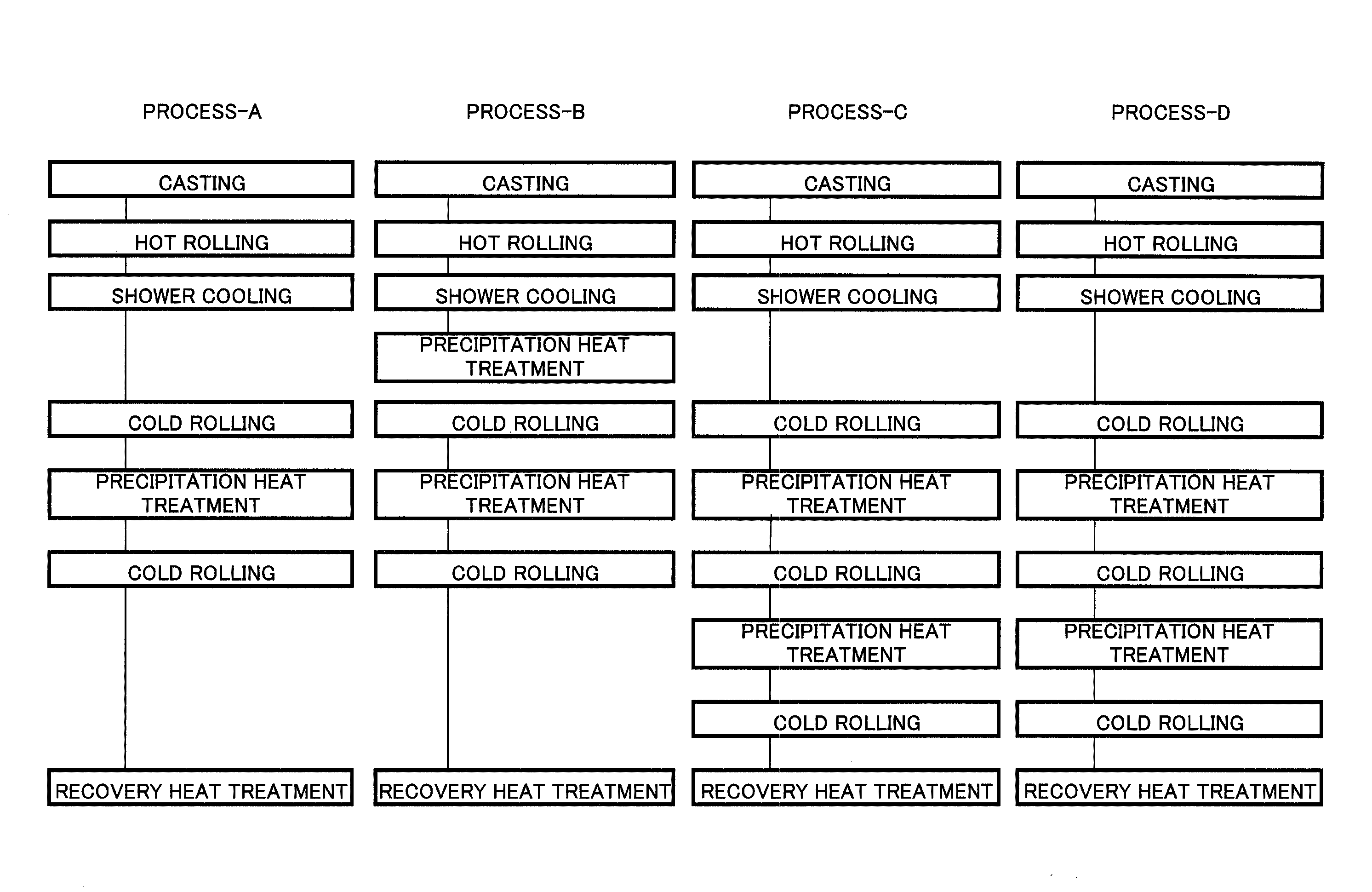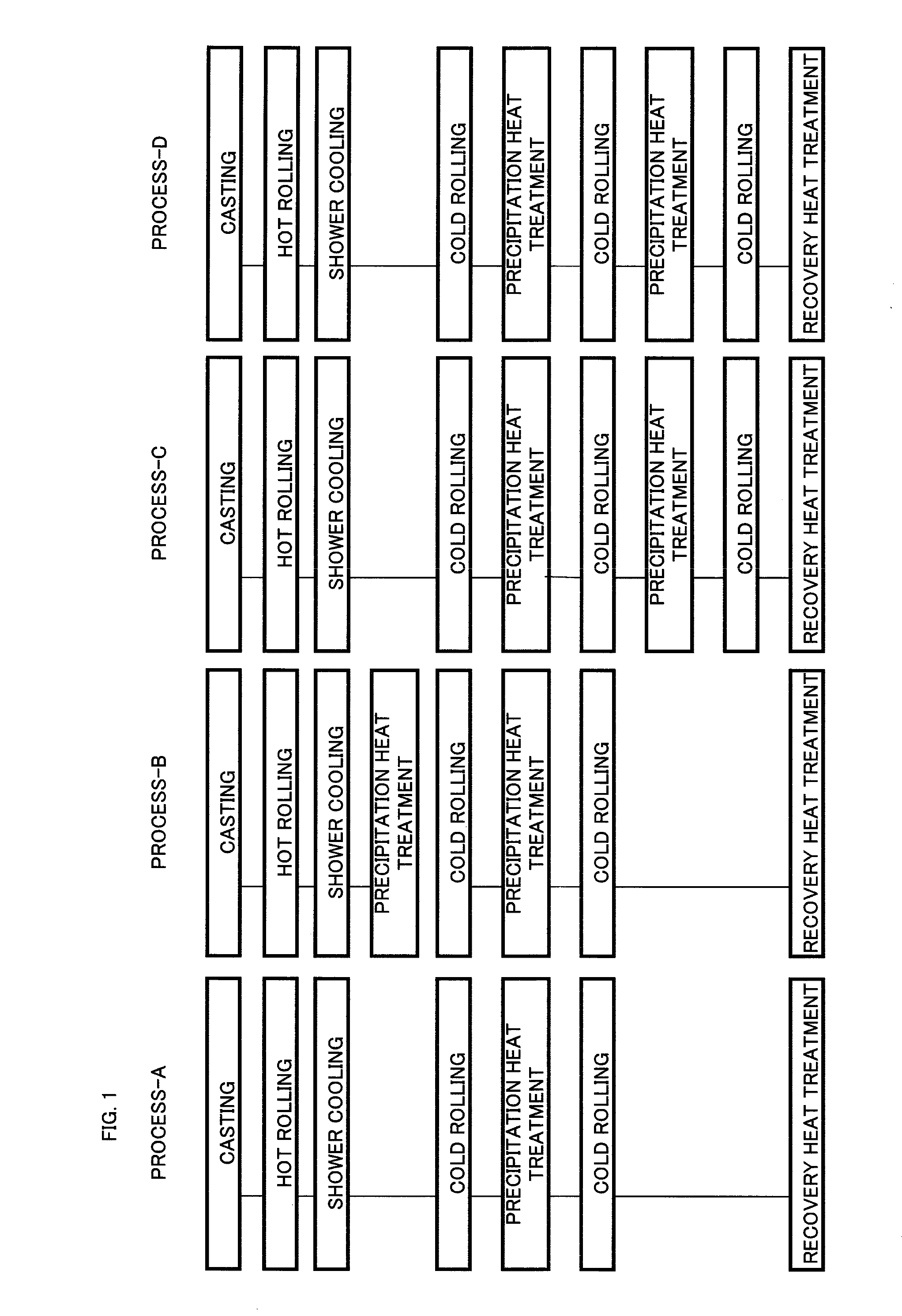High-strength and high-electrical conductivity copper alloy rolled sheet and method of manufacturing the same
a high-strength, high-electrical conductivity technology, applied in the direction of manufacturing tools, heat treatment equipment, conductors, etc., can solve the problems of increasing the cost of high-temperature process, increasing the weight, and requiring significant energy in the high-temperature process of 950° c., so as to prevent intermediate temperature embrittlement, improve the ductility and strength of high-strength and high-electrical conductivity copper alloy rolled sheet, and strength and electrical conductivity
- Summary
- Abstract
- Description
- Claims
- Application Information
AI Technical Summary
Benefits of technology
Problems solved by technology
Method used
Image
Examples
examples
[0096]By using the above-described first to fifth invention alloys and copper alloys each having a composition for comparison, high-performance copper alloy rolled sheets were created. Table 1 shows compositions of alloys used to create the high-performance copper alloy rolled sheets.
[0097]
TABLE 1AlloyAlloy composition (mass %)No.CuCoPSnNiFeAlZnAgMgZrX1X2X3First11Rem.0.320.081.024.41inventionalloySecond21Rem.0.270.0810.043.65invention22Rem.0.190.0580.033.73alloyThird31Rem.0.250.0690.624.05inventionalloyFourth41Rem.0.230.0820.020.073.870.08invention42Rem.0.190.0670.030.030.033.980.10alloy43Rem.0.210.0650.110.023.890.04Fifth51Rem.0.290.0870.030.030.023.63invention52Rem.0.240.0680.030.030.0073.95alloy53Rem.0.220.0790.040.050.020.043.860.1054Rem.0.190.0770.430.080.133.690.1055Rem.0.270.0730.480.040.014.1156Rem.0.240.0740.020.040.020.024.110.0557Rem.0.260.0760.030.13.78Comparative61Rem.0.120.050.032.76alloy62Rem.0.190.0410.055.7263Rem.0.250.0650.0014.3464Rem.0.250.0470.046.3965Rem.0.160....
PUM
| Property | Measurement | Unit |
|---|---|---|
| start temperature | aaaaa | aaaaa |
| temperature | aaaaa | aaaaa |
| average grain size | aaaaa | aaaaa |
Abstract
Description
Claims
Application Information
 Login to View More
Login to View More - R&D
- Intellectual Property
- Life Sciences
- Materials
- Tech Scout
- Unparalleled Data Quality
- Higher Quality Content
- 60% Fewer Hallucinations
Browse by: Latest US Patents, China's latest patents, Technical Efficacy Thesaurus, Application Domain, Technology Topic, Popular Technical Reports.
© 2025 PatSnap. All rights reserved.Legal|Privacy policy|Modern Slavery Act Transparency Statement|Sitemap|About US| Contact US: help@patsnap.com



